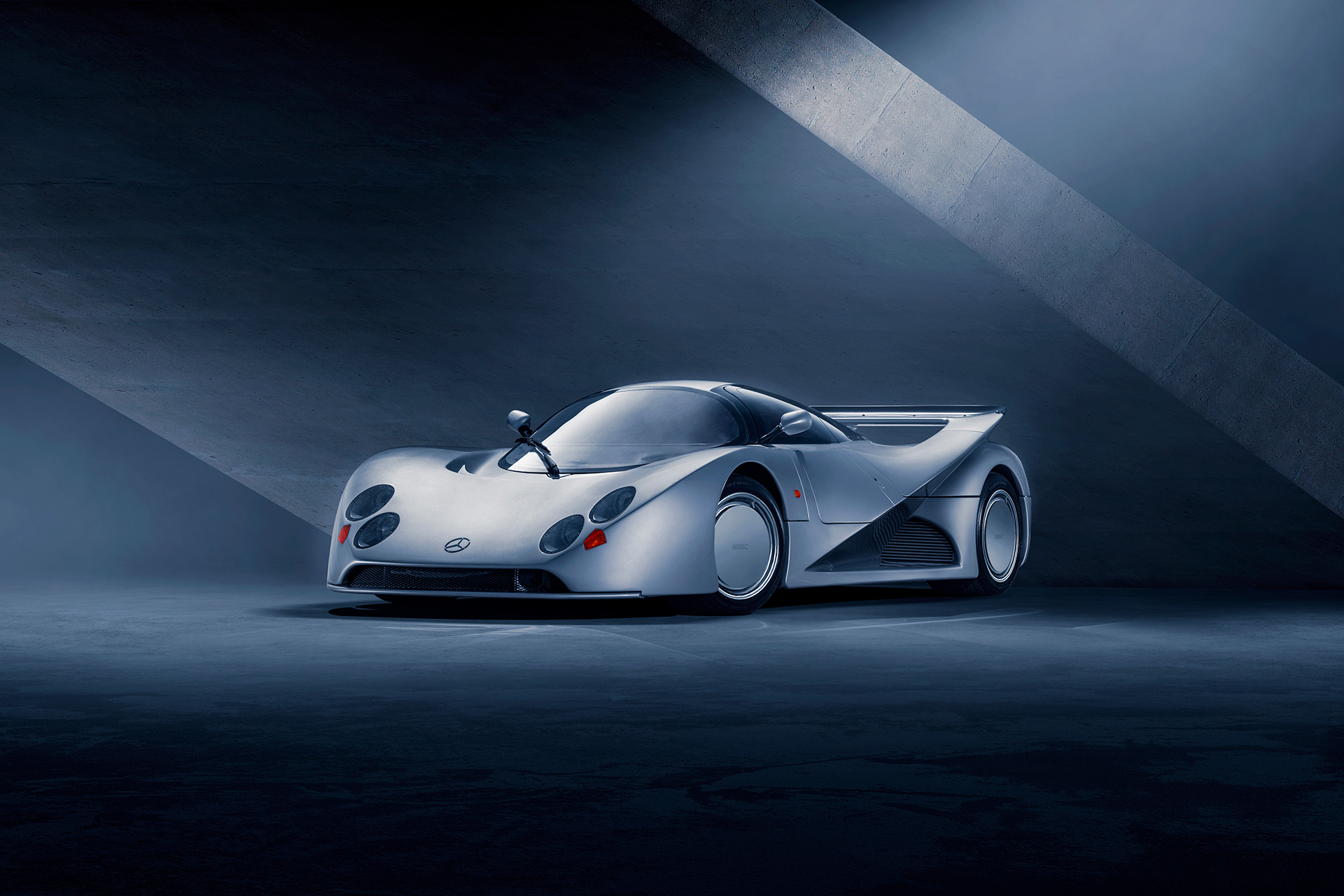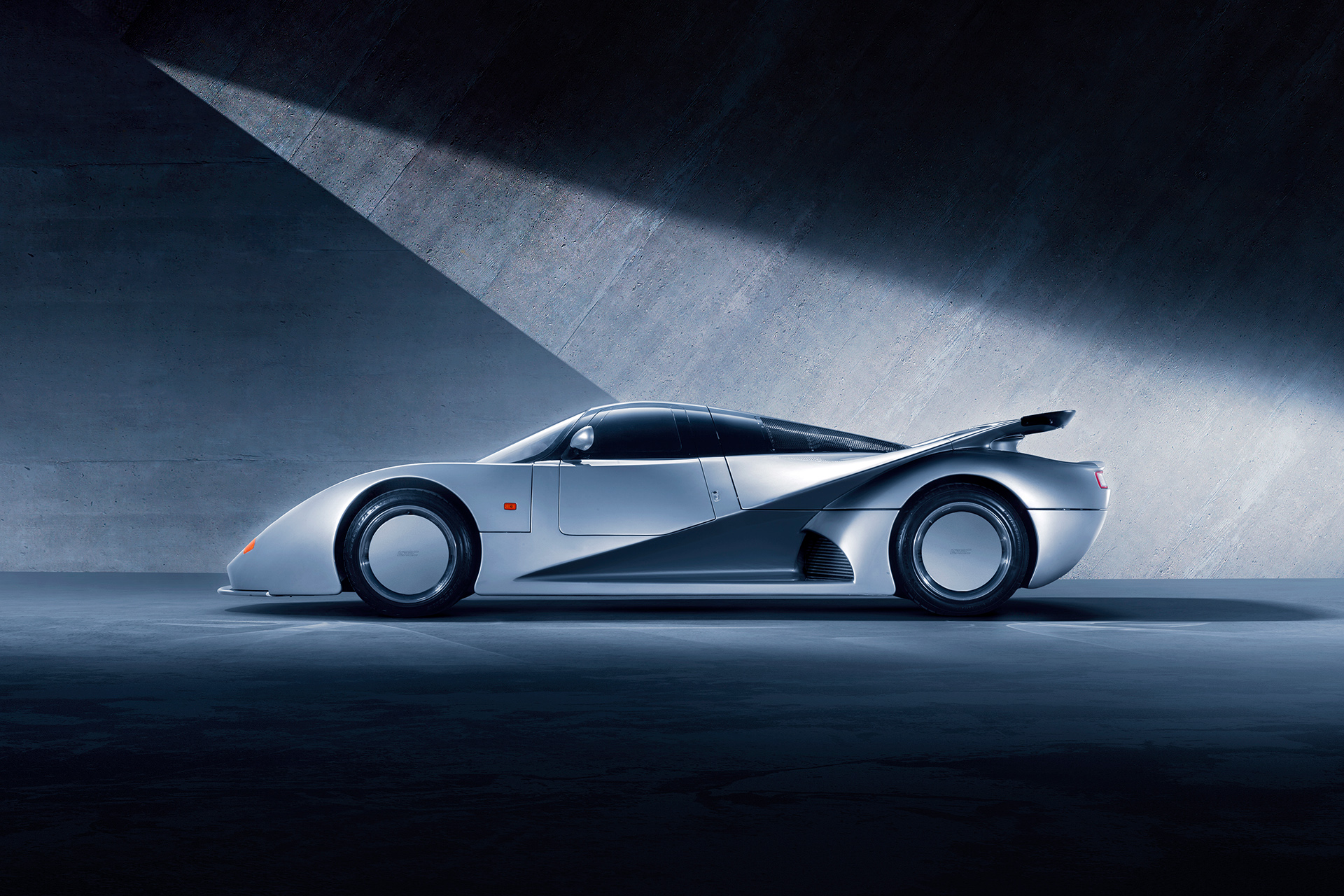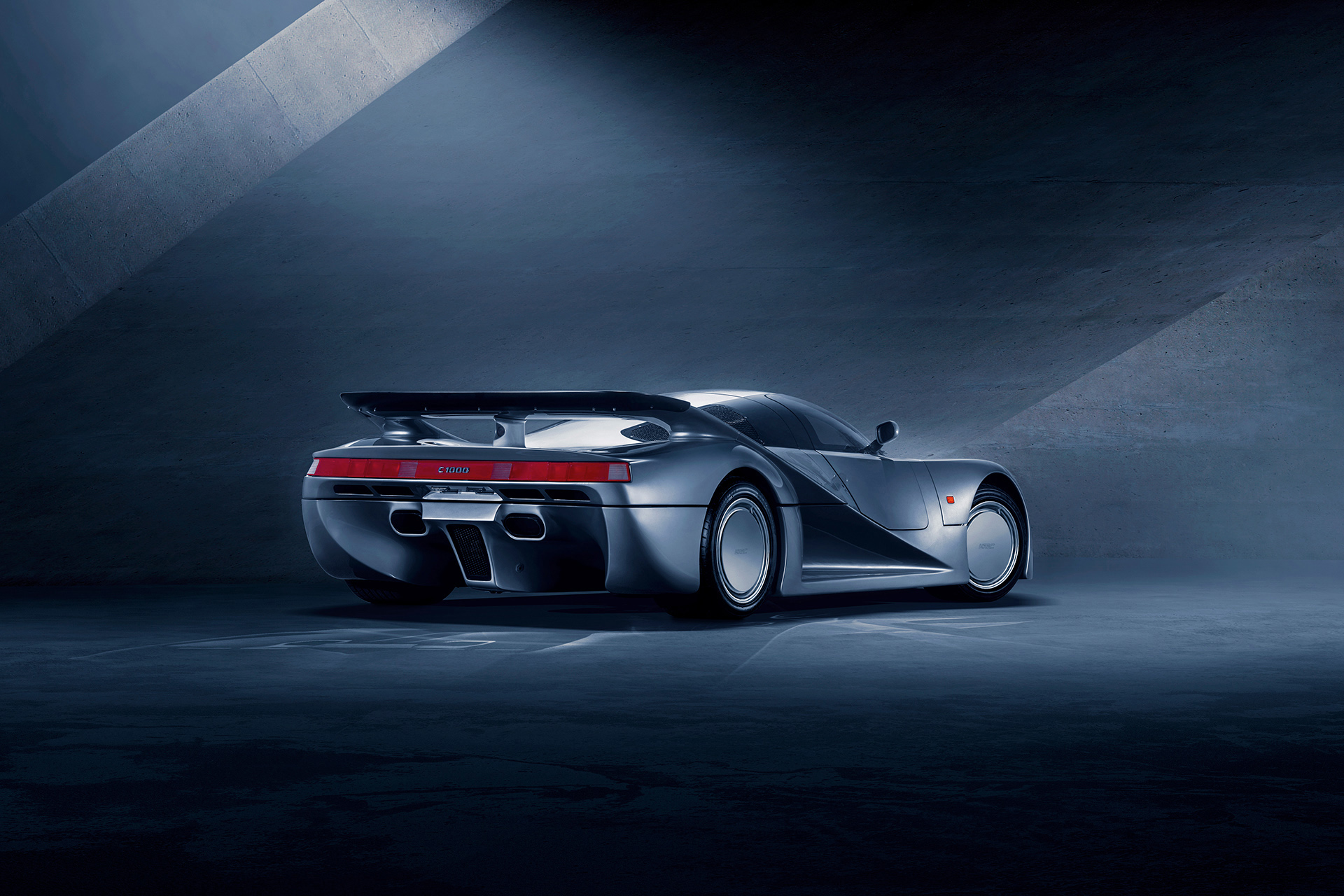Some cars exist in myths and legends. They can be so rare that even a car enthusiast might only see them by the good graces of another. The Mercedes C1000 exemplifies this. A nearly 270-mile-an-hour car made in 1994 for an oil tycoon, it is as much an automotive feat as it is mythology within the automotive world. This car is referred to as a unicorn, by unicorns themselves. And there I stood in an empty studio with it, no longer having to wonder what it would be like to see it in person. For, in its actual existence, the car of my childhood dreams had become my nightmare.
The lines of the Mercedes C1000 have more in common with a wedge doorstop than they do with any automobile. Car design typically follows a very routine pattern where one model year looks somewhat like the next, and so on. However, in the rare world of one-off cars, there are no boundaries to which design is constrained. It is obvious that the C1000 was built around speed, and speed only. For this reason, approaching it with a lighting scenario intended for any other car is impossible. As a commercial photographer, I enjoy a good challenge when it comes to creating, but lighting this car was downright punishing.
For the photo shoot of the Mercedes C1000, all the research I could do still didn’t provide enough information for me to plan lighting. I actually practiced the idea of lighting the car with wedge-shaped objects as we knew that this was a wedge-shaped, uniquely designed automobile as there ever has been. What is tricky about a car with such an angular form is that inevitably the driver has to sit in a rounded compartment, which breaks the diagonal shoulder line of the car and is lit differently than a flat-angle wedge would be. In order to counter this, we would need to combine lighting styles and use background light to create crossing lines, which are pleasing to a viewer’s eye, all while soft lighting the car to not blow out the harder body lines.
To do this, we used Profoto strobes in combination with hot lights. The strobes would create the scene, while the hot lights could paint in subtler gradients of the car. It was a method that I practiced a long time ago when photographing athletes with a combination of light types. In an effort to keep the Mercedes images as true to life as possible, it was the only way to get the shot. The one thing we had working for us with the Mercedes C1000 is that there wasn’t a lot of color to it. It was a flat gray with black, and even the rims of the car were a neutral tone. This enabled us to plan a lighting scheme that didn’t have to incorporate gels, and allowed me to focus specifically on modifiers and dialing in the light for the setting.
Even from the pics I had seen online of the C1000, I went into the photo shoot thinking that the car had more curves to it than it did, but this was not the case. For the car enthusiasts out there, the Mercedes C1000 is quite similar in its angles to a Porsche 962. The doors open upward, and the sides of the car are relatively perpendicular to the ground. I imagine this is for some type of handling or performance gain. What’s amusing about the Mercedes is that it has two seats on a bench rather than the Porsche’s centrally mounted driver seat. While I did not drive the Mercedes, I took a ride in it around the city. The passenger sits at a very distinct angle, pointed towards a driver who has a more straight-facing position. It is obvious that the passenger is more of an afterthought in this car. Did I mention that the entire interior of the car is bright red leather?
Photographing the car was more akin to choreographing a dance. The assistants would lift lights off the ground and slowly walk down the side of the Mercedes as I counted off the time until the shutter closed. The lighting setup up would include lines like, “3 seconds on rear bumper, 7 seconds on the side and 1 second on the front.” We had to do this in an effort to maintain more texture on the metal of the car’s skin, as using a large soft box wouldn’t have allowed us the subtle transitions between highlight and shadow. Being able to be more specific in the light angle also allowed us to take some of the flatness out of the sides of the car, and introduce a bit more curve into its form in the images. Sometimes the shot would start by triggering the flashes via remote, and then transition into hot light painting. However, we found that shooting a separate frame for the strobes was easier in this situation. Another surprising discovery from this photo shoot was that we all needed to be wearing our darkest clothes. My assistant wore black pants, a black shirt, and black gloves, as any light reflection of white, or even jewelry, could lead to a retouching nightmare, for it would exist as a specular highlight down the entirety of the car.
Once we had solved the solution for how the car’s angles responded to the camera and lighting, we were able to dial in a workflow and produce a set of images rather quickly. At the end of the day, we all celebrated. I bought more beer than usual for my crew, recognizing that the shoot would never have been possible without their hard work. Part of me was grateful to have seen a car that I dreamed of as a kid. But more than anything, I was relieved that I would likely never have to photograph it again.





Thanks for sharing the grueling details behind the image. And for teaching/emphasizing the point that no amount of Photoshop can bring up details that weren’t captured in the first place. You’ve got me thinking about light painting for portraiture.